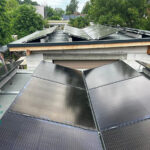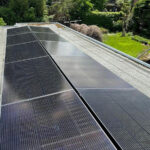Many people have put PVs on their roofs as a result of the PV industry’s promotion, but why can’t the installation of rooftop PV power stations be estimated by area? How well-versed are you in the various PV power generation modalities? Why can’t rooftop PV power station installation costs be determined based on area?
The installed capacity of PV power plants, rather than their surface area, is determined by watts. But the area is also connected to the installed capacity.
On the market, there are three varieties of PV power generation: – Amorphous silicon photovoltaic panels PV modules made of polycrystalline silicon – PV modules made of monocrystalline silicon These are also the main elements in the creation of PV power.
Silicon Amorphous PV Module
PV modules made on amorphous silicon have a maximum power density per square meter of 78W and a minimum power density of around 50W.
Features include a huge footprint, a high degree of fragility, poor conversion efficiency, risky transportation, and rapid attenuation, albeit low light is preferable.
Module for Polysilicon PV
Currently, the more popular polysilicon PV modules on the market include power densities of 260W, 265W, 270W, and 275W per square meter.
Long service life and modest attenuation are features. The pricing has advantages over monocrystalline silicon PV modules, and it is also one of the more well-liked models on the market.
PV made of silicon monocrystals
Monocrystalline silicon PV modules typically have an area of 1.63 square meters and a power of 280W, 285W, 290W, or 295W.
Features: When compared to polycrystalline PV modules of the same area, the conversion efficiency is marginally greater. The cost is, of course, more as well, but the service life is essentially the same.
Everyone should be able to comprehend the sizes of different PV modules after some analysis. But the roof area has a significant impact on the installed capacity. You must first know what kind of roof you have in order to assess how much system may be installed on it.
For the installation of PV power generation, there are typically three types of roofs: flat concrete roofs, brick and tile structures, and color steel roofs. The roof is made differently. The PV power station’s installation process is also different. The power station’s installation site differs as well.
colored steel roof tiles
When installing a PV power station on a steel building with a color steel tile roof, PV modules are typically only installed on the south-facing side and are laid out at a ratio of 1 kilowatt per 10 square meters, or 1 megawatt (1 megawatt is equal to 1000 kilowatts) Number. The project will require 10,000 square meters of space.
Brick roofing
In order to establish a PV power station on a brick-and-tile roof, it is typically decided to cover the exposed roof area with PV modules from 08:00 to 16:00. While the manner of installation differs from that of the color steel roof, the laying ratio is the same and it also covers a 1 kilowatt area. 10 square meters or so.
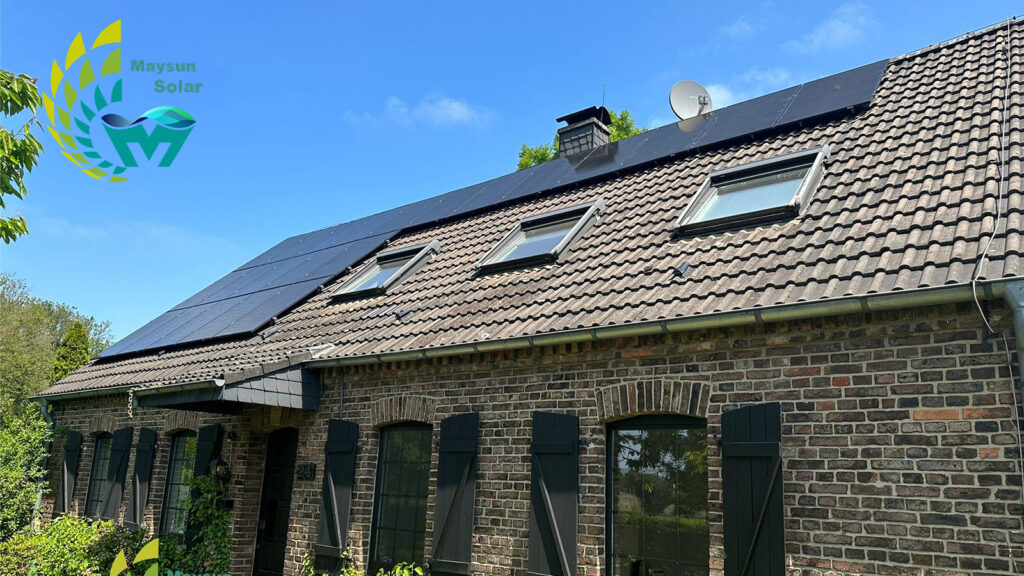
Flat roofing
In order to install a PV power station on a flat roof, it is necessary to design an ideal horizontal inclination angle. As a result, a specific distance is needed between each row of modules to ensure that they are not obscured by the shadow of the front row of modules. As a result, the project’s total roof area will be larger than that of tileable villa roofs and color steel tiles.
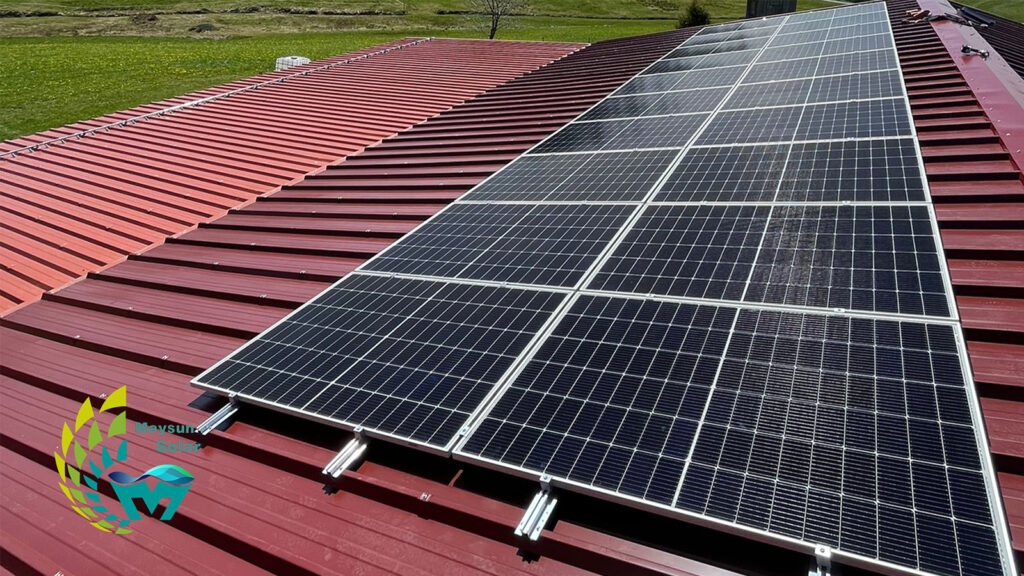
WM is megawatts.
1000000 watts is one megawatt. 100,000 kilowatts is equal to 100 megawatts (MW), or 100000000W. A 100,000 kilowatt unit is equal to one megawatt. Wp is the fundamental unit of power produced by batteries or power plants. W is the unit of power. The letter W, which stands for “power,” stands for “power generation.”
According to the information above, MWp stands for megawatt and KWp for kilowatt.
PV energy production When referring to the installed capacity of PV power plants, W, MW, and GW are frequently used. The following describes their conversion relationship:
1GW=1000MW
1MW=1000KW
1KW=1000W
Everyone is used to expressing power use in “degrees” in daily life. Actually, it goes by the more exotic moniker of “kilowatt per hour (kWh)”.
One of them is “W,” which is pronounced “W” and is named after the British inventor James Watt.
James Watt invented the first usable steam engine in 1776, ushering in a new era of energy usage and the “steam age” for humanity. Later generations changed the name of the power unit to “watt” (abbreviated as “watt,” sign W) in honor of this brilliant innovator.

Use daily life as an illustration.
One kilowatt-hour of electricity is equal to one kilowatt-hour, which is what happens when a device with a 1 kilowatt rating is used at maximum capacity for one hour.
The equation is as follows: degree (kilowatts per hour) = power (kilowatts) x time (hours).
For instance, if a 500-watt electrical device, such a washing machine, is run continuously for 1 hour, the temperature will be 500/10001=0.5 degrees.
The rated electric power of typical home appliances is as follows:
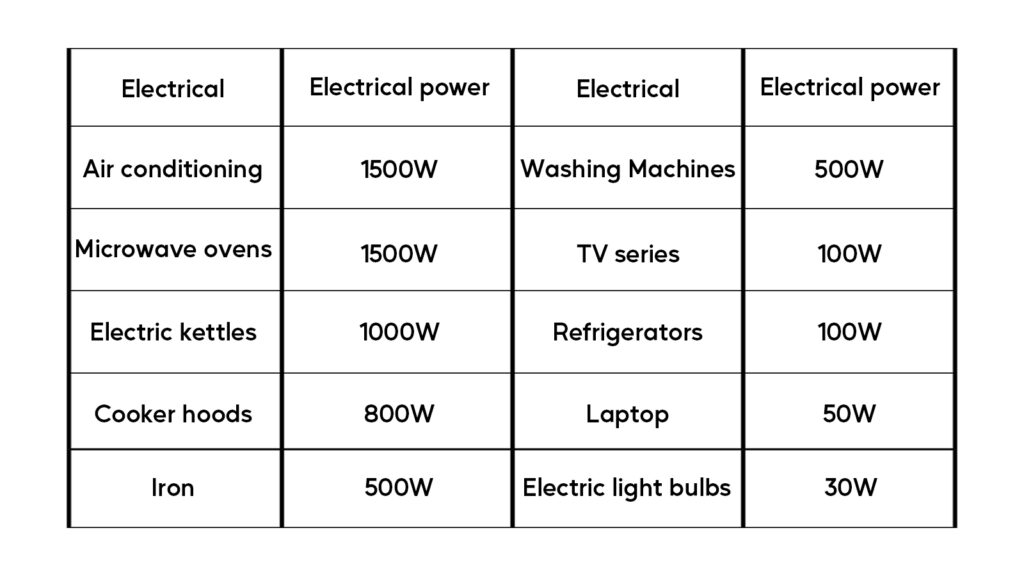
PV energy production saving energy while earning money
A 1kW PV system produces an average of 3.2kWh per day under normal conditions, which can be utilized to power the following typical electrical appliances:
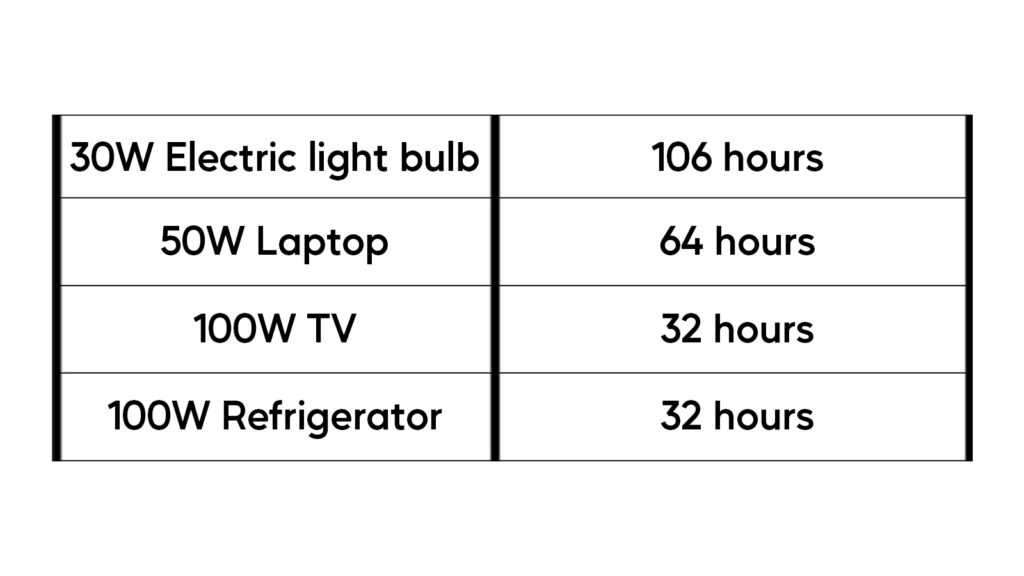
The home PV power station uses a “spontaneous self-use and surplus electricity connected to the grid” mode of operation. You can earn money with electricity after establishing a residential PV power station since you can both consume the electricity it produces and sell any that isn’t used to the State Grid.
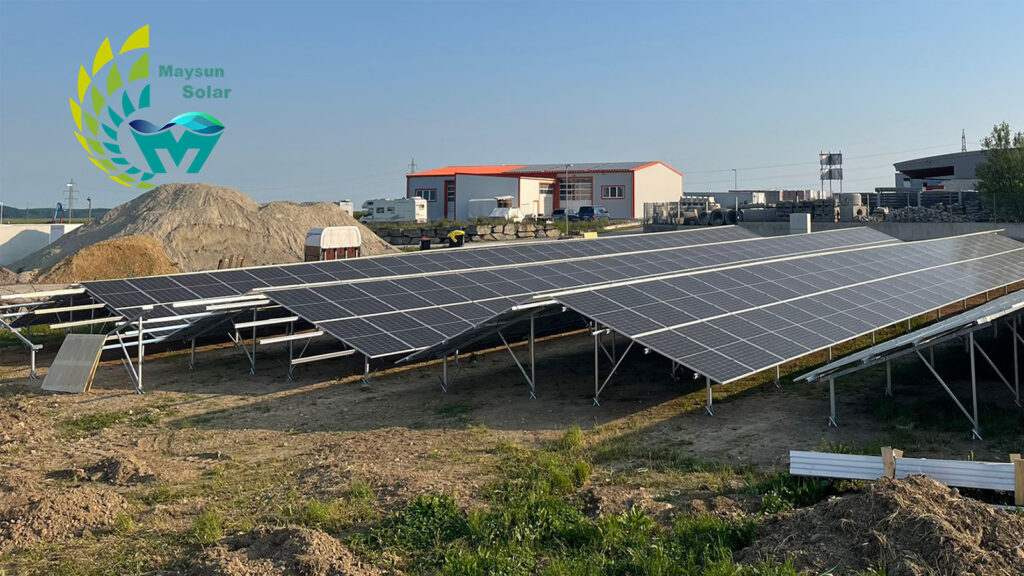
Maysun Solar, a manufacturer of photovoltaic modules with 15 years of industry experience, can give you solar panels of the highest caliber. To get in touch with us and request a product quote, use the button below.
You may be interested in:

How to Effectively Clean and Intelligently Maintain Photovoltaic Systems for Optimal Performance?
Explore how scientific cleaning and intelligent maintenance can ensure the efficient operation of commercial and industrial photovoltaic systems. Practical advice covers module cleaning frequency, monitoring system configuration, and long-term strategies for energy savings and performance enhancement.

2025 European Photovoltaic Policy Map: Deployment Paths and Regional Strategies for Commercial and Industrial Photovoltaics
A comprehensive analysis of the 2025 European commercial and industrial photovoltaic policy map, focusing on deployment strategies, incentive comparisons, and zero-investment models to support businesses in achieving an efficient and green transition.

Empowering Factories with Solar Energy A Strategic Tool for Controlling Production Electricity Costs
Commercial and industrial solar is becoming a key solution for factories to reduce electricity costs and hedge against price fluctuations. This article systematically analyzes its deployment models, cost advantages, and sustainable value pathways.

How Businesses Can Offset Carbon Taxes with Solar Power
This article analyzes the latest carbon tax policies and photovoltaic deduction strategies, helping European businesses legally reduce taxes, increase profits through solar investment, and achieve a win-win situation for both economy and environment.

Forecast and Response: Seizing the Next Decade’s Growth Dividend in Europe’s Commercial and Industrial Photovoltaics Market
Maysun Solar analyzes the growth trends of commercial and industrial photovoltaics in Europe over the next ten years, from policies and ESG to technological innovation, helping companies seize the initiative in the energy transition.

How to Calculate Solar System ROI and Optimize Long-Term Returns?
Solar power is becoming a key solution for businesses to reduce costs and improve efficiency. Accurately calculating ROI and optimizing long-term returns are essential to maximizing investment value.


